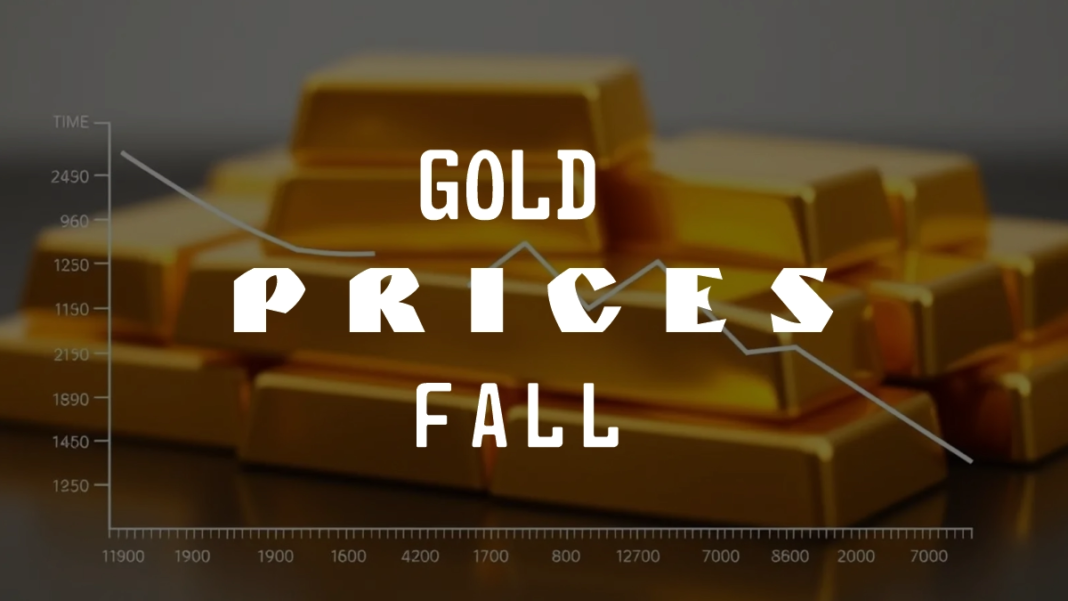Gold has long been considered a safe-haven asset, especially during times of economic uncertainty. Yet, in 2025, after a record-breaking rally that saw prices soar above $4,380 per ounce, gold prices fall sharply-marking the steepest single-day drop in over a decade. This unexpected reversal has left investors questioning the future of gold and how to navigate the shifting landscape.
In this article, we’ll explore the reasons behind the recent gold prices fall, analyze the broader market implications, and provide expert-backed strategies for investors looking to adapt in 2025.
1. The Rally Before the Fall: What Sparked Gold’s Surge?
Before diving into the reasons for the decline, it’s essential to understand the context of gold’s meteoric rise. According to the World Bank’s April 2025 Commodity Markets Outlook, gold surged nearly 25% in the first half of the year, building on a 20% increase in 2024. This rally was driven by:
- Escalating geopolitical tensions (e.g., US-China trade disputes, Middle East conflicts)
- Elevated economic uncertainty
- Robust central bank purchases
- Record inflows into gold-backed ETFs [blogs.worldbank.org]
The World Gold Council reported that gold recorded 26 new all-time highs in H1 2025, with investment demand reaching its highest level since 2022. [blogs.worldbank.org]
2. Why Gold Prices Are Falling in 2025: Key Drivers
Despite its strong performance, gold has recently experienced a significant correction. On October 21, 2025, gold fell over 6% in a single day, dropping from $4,381 to just over $4,000 per ounce. Several factors contributed to this gold prices fall: [republicworld.com]
a. Profit-Taking After a Parabolic Rise
Gold had surged nearly 72% at its peak, prompting investors to lock in gains. This led to heavy outflows from gold ETFs and a wave of profit-booking, which triggered a sharp sell-off. [republicworld.com]
b. Easing Geopolitical Tensions
President Trump’s softened stance on tariffs and upcoming talks with Chinese President Xi Jinping reduced geopolitical risk premiums. This diminished gold’s appeal as a safe-haven asset. [republicworld.com]
c. Strengthening US Dollar
A stronger dollar makes gold more expensive for non-US buyers, reducing global demand. The US Dollar Index rose to 98.91 in October, further pressuring gold prices. [cbsnews.com]
d. Seasonal Demand Decline
Post-festive season in key markets like India saw a dip in physical gold demand, contributing to the downward pressure. [republicworld.com]
3. Investor Sentiment and Market Reactions
The sudden fall in gold prices has led to mixed reactions among investors. While some are concerned about a prolonged downturn, others view it as a healthy correction.
According to CBS News, the current environment is not a crisis but a turning point. Investors are advised to reassess their strategies, consider dollar-cost averaging, and maintain diversified portfolios. [cbsnews.com]
Sugandha Sachdeva, Founder of SS WealthStreet, notes:
“Despite short-term volatility and profit-taking, the medium-to-long term outlook for gold remains bullish. Investors continue to seek refuge in hard assets amid rising fiscal fragility and global currency pressures.” [republicworld.com]
4. Long-Term Outlook: Is Gold Still a Safe Bet?
Despite the recent correction, many experts remain optimistic about gold’s long-term prospects. The World Bank projects gold prices to remain elevated through 2025 and into 2026, supported by continued central bank buying and persistent global uncertainty. [blogs.worldbank.org]
J.P. Morgan forecasts gold to average $3,675/oz by Q4 2025 and potentially reach $5,000/oz by 2026. Similarly, Bank of America and HSBC have raised their targets, citing inflation and policy risks as key drivers. [goldsilver.com]
5. Strategic Advice for Investors in 2025
With gold’s volatility in mind, here are some expert-backed strategies for investors:
a. Diversify Your Portfolio
Gold should be part of a balanced investment strategy. Experts recommend allocating 5–12% of your portfolio to gold, depending on risk tolerance. [goldsilver.com]
b. Consider Physical Gold and ETFs
Physical gold offers security during systemic risks, while ETFs provide liquidity. Choose based on your investment horizon and storage capabilities.
c. Monitor Key Indicators
Keep an eye on inflation data, interest rate decisions, and geopolitical developments. These factors will influence gold’s trajectory in the coming months.
d. Don’t Panic-Plan
Use corrections as opportunities to enter or rebalance your positions. Avoid emotional decisions and focus on long-term goals.
Conclusion: What This Means for Investors
The fall in gold prices in 2025 is not a sign of weakness but a reflection of shifting global dynamics. While short-term volatility may persist, the underlying fundamentals-central bank demand, inflation concerns, and geopolitical risks-continue to support gold’s strategic value.
As Gregory Shearer, Head of Metals Strategy at J.P. Morgan, puts it:
“Gold remains one of the most optimal hedges for the unique combination of stagflation, recession, debasement, and U.S. policy risks facing markets in 2025 and 2026.” [goldsilver.com]
People Also Asked
Why did gold prices fall in 2025?
Gold prices fell due to profit-taking, easing geopolitical tensions, a stronger US dollar, and seasonal demand decline.
Is gold still a good investment in 2025?
Yes. Despite short-term volatility, experts forecast continued appreciation, with prices potentially reaching $5,000/oz by 2026.
How much gold should I have in my portfolio?
Financial advisors recommend 5-12% allocation, depending on your risk profile. Some suggest up to 20% in uncertain times.
Will gold prices recover in 2025?
If inflation rises or geopolitical tensions escalate, gold may rebound. Support levels around $4,000/oz are being closely watched.


